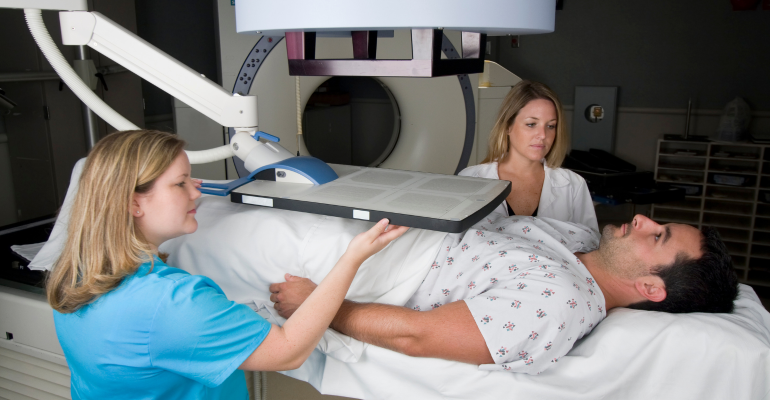In 2018, prostate cancer was the second most common malignancy (after lung cancer) in men globally, with 1,276,106 new cases and 358,989 fatalities (3.8 per cent of all cancer deaths in men). According to WHO, presently there are 1.41 million cases worldwide. Dr. Aftab Bhatti, Consultant Urologist, Tawam Hospital, part of Abu Dhabi Health Services Company (SEHA), Dr. Hosam Al Qudah Consultant and Lead Urologist and Dr. Omer Al-Derwish Consultant Urologist from Fakeeh University Hospital, discuss how diagnostics and treatments have changed through innovation.
Prevention of prostate cancer
Dr. Hosam Al Qudah: Numerous studies indicate that the chances of having prostate cancer can be lowered through a low-fat diet and a healthier lifestyle. Typically, this means decreasing the intake of red meat, eating more fruits and vegetables, daily exercise, and maintaining a healthy weight.
Detection
Dr. Hosam Al Qudah: In the past, detection and diagnosis were through ultrasounds and biopsies, however, now there is a prevalence in using MRIs. MRIs are beneficial for diagnosis, staging and follow-ups for patients with prostate cancer. We use MRIs now in almost all patients before the biopsy of prostate cancer, as it can detect nodules as small as five millimetres in the prostate. It also stratifies the nodules from benign or cancerous. There is a staging class and classification for this, known as PI RADS, which helps us determine if we need to conduct a biopsy or not.
It is key to use new generation MRIs, such as 3 tesla, which are recommended for the use of detection. The old machines are unable to detect accurately due to poor imaging quality.
Dr. Aftab Ahmed Bhatti: MRI scans are performed at the beginning and suspicious lesions are targeted to obtain a tissue sample using an MRI and the ‘Ultrasound of Prostate Fusion’ technique, and with special equipment for MRI Fusion Targeted Biopsies.
This technique is superior to the conventional way of performing biopsies with Ultrasound guidance alone, where most of the time cancerous lesions are not visible.
More importantly, if biopsies are performed after an MRI, these are often far superior compared to those obtained after an ultrasound. As most cancers are not visualised on ultrasound, these biopsies are obtained in the ‘blind’.
In addition, the prostate-specific antigen, or PSA, blood test checks for a protein produced by normal, as well as malignant, cells in the prostate gland. It measures the level of PSA in a man’s blood, with elevated levels often a sign of prostate cancer.
Early detection is key. There have been improvements in the use of the PSA test as a diagnostic tool. The use of a PSA density (PSAD) test helps to further improve the sensitivity of the test and offers a better guide to biopsies of the prostate.

Treatment
Dr. Omer Al-Derwish: The treatment depends on the stage of the disease. The first step is to evaluate if the cancer is localised, locally advanced or metastatic? For localised prostate cancer, the gold standard is either surgery, which is the removal of the whole prostate and associated glands and sometimes part of the lymphatic system or radiotherapy. In terms of the radical surgery or removal of the prostate, the most advanced technique now is using robotic assisted prostatectomy where we have a detailed view of the prostate. Robotic assisted prostatectomy allows us to have a more detailed and precise resection, as well as the anastomosis of the urethra to the bladder.
Some studies have shown that this improves the tumour control outcome as well as the functional outcome. The main two issues as we know them are urinary incontinence and the risk of sexual dysfunction. Robotic surgery allows us to optimise these outcomes.
Regarding the other techniques, through focal therapy, we can target if the patient has early-stage prostate cancer and if it's localised, then we can target cancer without damaging the rest of the tissue and minimising the local side effects.
With metastatic prostate cancer again, hormonal therapy is the gold standard as prostate cancer depends on the main hormone testosterone for growth and we target the hormone to control cancer. Unfortunately, when the cancer is metastatic, the aim is to control, and the cure rate is lower as we know.
Through efforts to optimise the treatment, we commonly use combination therapy, where we can start with hormonal therapy upfront, in addition to either chemotherapy or second line or monotherapy as well as immunotherapy.
Screening
Dr. Omer Al-Derwish: In the urology community, screening of prostate cancer is one of the challenging and debatable issues. Findings from studies conducted in the U.S. and Europe on the early detection of prostate cancer and its outcomes have been controversial. The European study indicates a mortality reduction up to 29 per cent of the 16 men for early detection of prostate cancer, whilst the American study showed no survival benefit from any detection. What we know from epidemiological studies is that familial or family history of prostate cancer increases your risk. Certain ethnical groups such as Africans also carry an increased risk of having prostate cancer, and hence there are some genetic or gene mutations that can be detected such as BRCA, lynch syndrome and HPC gene 1 and 2. There are no strict guidelines regarding this, but there are methods that we can use for patients who are at high risk for prostate cancer. For early detection, we look at factors such as family history, age (starting at 45), high PSA, clinical examination and using a specific threshold. Genetic studies can then be aligned to predict the risk of having prostate cancer.

